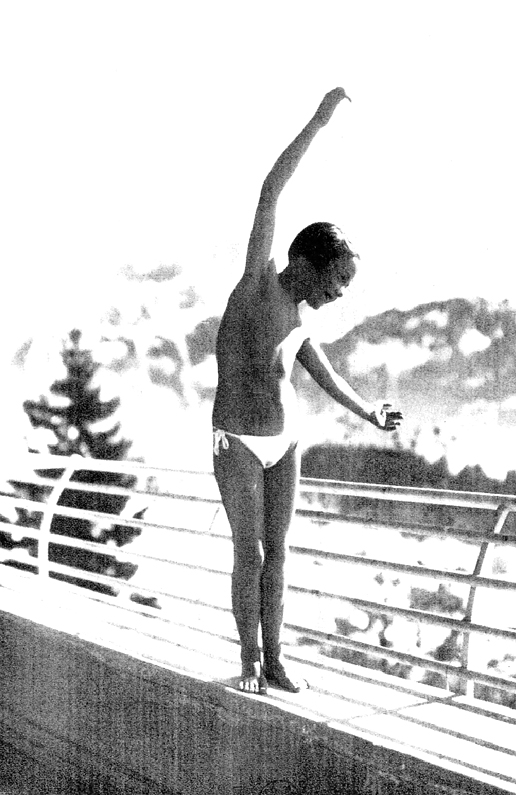Young patient of Dr. Rollier, frontispiece.
Young patient of Dr. Rollier, frontispiece.
Quarante ans d'héliothérapie / par A. Rollier. [Lausanne : F. Rouge], 1944. (frontispiece) WB 480 R753q 1944 Osler - Robertson.
This photograph features a young girl, almost nude, on the balcony of one of Rollier's Leysin sanatoria. As a patient at his facility, the child in Rollier's photograph would have followed a strict medical regime throughout the day. Yet the photograph does not indicate this. With her giddy, playful gestures and shameless presentation of her almost naked body, she expresses the feeling of total bodily liberation. The extreme contrasts of light and shadow indicate that she is receiving the direct impact of brilliant, unobstructed sunshine. It is so bright that in this photograph her upright arm loses contour, dissolved by the light. Equally, the whiteness of her minimal clothing contrasts with her bronzed skin, denoting that she is familiar with the practice and is healing well. In numerous before-and-after photographs, the contrast between light and dark is emphasized to maximum intensity, with "before" photos often taking place in darkened interiors to contrast with the patient's extreme pallor and "after" photos shot outdoors or in front of white backgrounds to heighten bronzed, healed skin. Photographs such as these highlight the tensions present in the literature and imagery around light therapy. What, for example, is "natural" about these natural therapies? Are images such as these documentary or in fact highly constructed representations of light therapy designed to pass themselves off as natural, pleasurable, and freeing?




 Click for larger image (0.2MB)
Click for larger image (0.2MB)